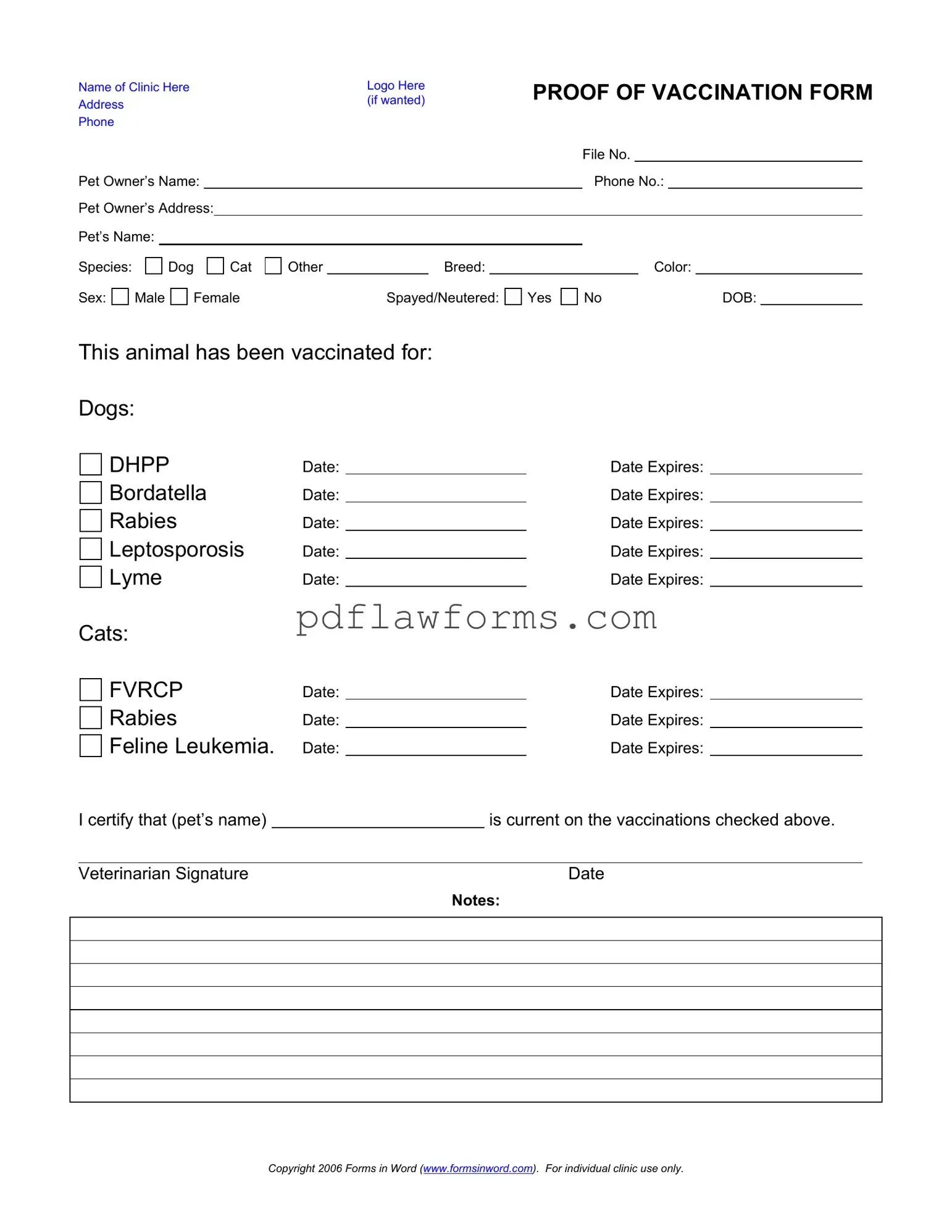Filling out the Proof of Vaccination Dog form can seem straightforward, but many people make common mistakes that can lead to issues later. One frequent error is forgetting to include the pet owner's name. This information is crucial for identifying who is responsible for the pet. Without it, the form may not be accepted.
Another common mistake is leaving out the pet's name. Each form should clearly state the name of the pet receiving vaccinations. If this is missing, it can create confusion and delay in processing the vaccination record.
Some individuals do not provide complete contact information. The phone number and address of the pet owner are important for follow-up questions or notifications. Omitting these details can hinder communication between the clinic and the pet owner.
People often overlook the species section. While it may seem obvious, it is essential to specify whether the pet is a dog, cat, or other. This detail ensures that the correct vaccination records are applied.
When filling out the breed, some owners write in vague terms or abbreviations. Instead, it is best to provide the full breed name. This helps veterinarians and clinics maintain accurate records.
Another mistake is failing to check the appropriate vaccinations. Owners sometimes forget to mark the vaccines their pet has received. This can lead to incomplete records, which may affect future vet visits or travel requirements.
Dates can be tricky as well. People often forget to fill in the date of vaccination or the expiration date. These dates are vital for ensuring that pets are up-to-date on their shots. Missing dates can result in confusion about the pet's vaccination status.
Some individuals neglect to sign the form. The veterinarian's signature is a key component of the Proof of Vaccination Dog form. Without it, the document may not be considered valid.
Lastly, people sometimes ignore the notes section. This area can be useful for adding any additional information about the pet's health or special circumstances. Leaving it blank can mean missing out on important details.
By being aware of these common mistakes, pet owners can ensure that their Proof of Vaccination Dog form is completed correctly. This helps avoid delays and ensures that their pets receive the best care possible.
